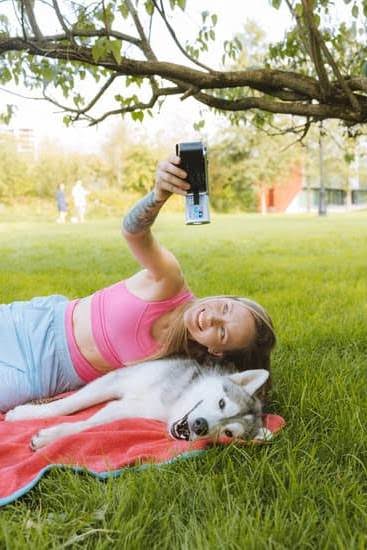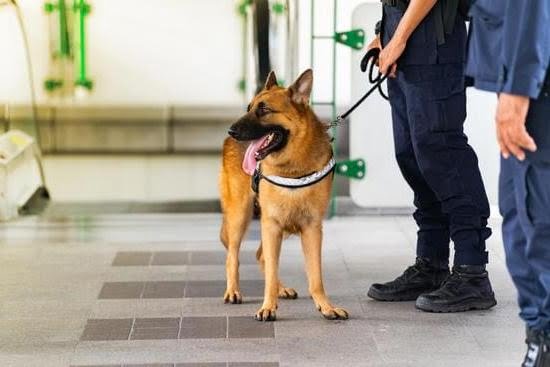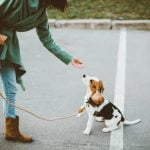Potty training is a crucial aspect of dog ownership, and understanding how often to take your dog out is essential for successful training. Establishing a consistent potty routine not only helps prevent accidents indoors but also strengthens the bond between you and your furry companion. By sticking to a schedule that works for both you and your dog, you can ensure a smooth transition into a well-behaved pet.
Consistency is key when it comes to potty training your dog. Knowing when and how often to take your dog out can make all the difference in the success of this training process. By paying attention to your dog’s cues and setting up a regular schedule, you can effectively teach them where and when it is appropriate to relieve themselves.
In this article, we will delve into the importance of potty training for dogs, providing tips on setting up a practical schedule, recognizing signs indicating your dog needs to go out, factors influencing their bathroom needs such as age and size, and recommendations on how often to take them out based on their age. By the end of this read, you will be equipped with valuable insights to establish a successful potty routine with your beloved canine companion.
Setting a Potty Training Schedule
One of the key components of successful potty training for dogs is setting a consistent schedule. By establishing a routine for when and how often to take your dog out, you can help them learn to associate specific times with bathroom breaks. This not only facilitates their understanding of where they should go potty but also helps prevent accidents inside the house. So, how often should you take your dog out for potty training?
Creating a Schedule
When determining how often to take your dog out for potty breaks, it’s essential to consider factors such as their age, breed, size, and overall health. Puppies, for example, have smaller bladders and may need more frequent trips outside compared to adult dogs. A general rule of thumb is to take your dog out first thing in the morning, after meals, before bedtime, and throughout the day based on their individual needs.
Monitoring Your Dog’s Behavior
In addition to sticking to a regular schedule, it’s crucial to pay attention to your dog’s behavior and body language for signs that they need to go out. Some common cues that indicate it’s time for a bathroom break include sniffing around, circling or pacing, scratching at the door, whining, or suddenly stopping their activity.
By being observant and responsive to these signals, you can proactively address your dog’s potty needs before accidents happen in the house.
Signs Your Dog Needs to Go Out
Dogs communicate with us in many different ways, and one crucial aspect of successful potty training is recognizing the signs that your furry friend needs to go out. By paying attention to these cues, you can effectively prevent accidents in the house and reinforce good potty habits. Here are some common signs that your dog needs to go out:
- Sniffing and circling: One of the most common indicators that your dog needs to go potty is when they start sniffing around or walking in circles. This behavior is often a clear sign that they are looking for a spot to relieve themselves.
- Whining or barking: Dogs may vocalize their need to go out by whining, barking, or scratching at the door. These audible cues should not be ignored as they are your dog’s way of telling you it’s time for a bathroom break.
- Restlessness: If you notice your dog pacing back and forth, becoming restless, or suddenly getting up from their nap, it could be a sign that they need to go outside. Pay attention to any sudden changes in behavior.
Every dog is unique, so it’s essential to observe your pet closely and learn their individual cues for when they need to go out. By understanding these signals, you can establish a strong communication channel with your furry companion and make the potty training process smoother.
Remember, consistency is key when it comes to successful potty training. By being attentive and responsive to your dog’s cues, you can create a routine that works for both of you. This proactive approach will not only help prevent accidents but also strengthen the bond between you and your canine companion.
Factors Affecting How Often Dogs Need to Go Out
When it comes to potty training your dog, understanding the factors that can affect how often they need to go out is crucial. Age, breed, and size all play a significant role in determining your pet’s bathroom habits. Puppies, for example, have smaller bladders and may need to go out more frequently compared to adult dogs. Likewise, smaller breeds tend to have higher metabolisms and may require more frequent potty breaks.
Age is an important factor to consider when determining how often to take your dog out for potty training. Young puppies may need to go out every 30-60 minutes during the day, especially after eating, drinking, playing, or napping. As they grow older and their bladder capacity increases, you can gradually extend the time between potty breaks. Adult dogs typically need to be taken out every 4-6 hours, but this can vary depending on their individual needs.
In addition to age, breed and size also play a role in how often your dog needs to go out for potty training. Smaller breeds such as Chihuahuas or Yorkshire Terriers have faster metabolisms and may need more frequent trips outside.
On the other hand, larger breeds like Great Danes or Saint Bernards may be able to hold their bladder longer. It’s essential to observe your dog’s behavior and adjust their potty schedule accordingly based on their specific needs.
Frequency Recommendations
Potty training is a crucial aspect of owning a dog, and understanding how often to take your furry friend out is essential for successful training. The frequency at which you need to take your dog out for potty breaks can vary based on their age. Puppies, for example, have smaller bladders and higher metabolism rates compared to adult dogs, so they will need more frequent trips outdoors.
For puppies that are around 8-10 weeks old, experts recommend taking them out every 30-60 minutes during the day. As a general guideline, puppies can hold their bladder for approximately one hour for every month of age. So, a three-month-old puppy may be able to wait for about three hours between potty breaks. It’s crucial to observe your puppy’s behavior and adjust the frequency of potty breaks accordingly.
As dogs grow older and their bladder capacity increases, you can gradually extend the time between potty breaks. Adult dogs typically need to go outside every 4-6 hours, but this can vary depending on factors such as size, breed, and overall health. Monitoring your dog’s water intake and bathroom habits can give you an idea of how often they need to go out for bathroom breaks throughout the day.
| Age | Recommended Frequency of Potty Breaks |
|---|---|
| Puppies (8-10 weeks old) | Every 30-60 minutes |
| Puppies (3 months old) | Around every 3 hours |
| Adult Dogs | Every 4-6 hours |
Training Techniques
When it comes to potty training your dog, using positive reinforcement and consistency are key elements for success. Positive reinforcement involves rewarding your dog with treats, praise, or playtime when they exhibit desired behavior, such as going potty outside. This helps them associate the act of going outside with a positive outcome, making them more likely to repeat the behavior in the future.
Consistency is equally important in potty training. Dogs thrive on routines, so establishing a consistent schedule for taking your dog out can help reinforce good habits. Try to take your dog out at the same times each day, such as first thing in the morning, after meals, and before bedtime. This consistency will help your dog understand when they are expected to go potty and reduce the likelihood of accidents inside the house.
Another important aspect of training techniques is being patient and understanding with your dog. Remember that potty training takes time and that accidents will happen along the way. Stay calm and avoid punishing your dog for accidents – instead, focus on reinforcing good behavior and providing ample opportunities for them to go outside. With patience, positive reinforcement, and consistency, you’ll be well on your way to successfully potty training your furry friend.
| Training Technique | Description |
|---|---|
| Positive Reinforcement | Rewarding your dog with treats or praise for going potty outside |
| Consistency | Establishing a regular schedule for taking your dog out to reinforce good habits |
| Patience | Remaining patient and understanding during the potty training process |
Common Potty Training Mistakes to Avoid
Not Consistently Taking Your Dog Out
One common mistake that pet owners make when potty training their dogs is not being consistent with taking them out. Consistency is key in establishing a routine for your furry friend. By not being consistent in when you take your dog out, they may become confused and have accidents indoors. To avoid this, set a specific schedule for potty breaks and stick to it as much as possible.
Punishing Accidents Instead of Reinforcing Good Behavior
Another mistake to avoid during potty training is punishing your dog for having accidents inside the house. Punishment can create fear and anxiety in your pet, making it harder for them to understand the desired behavior. Instead, focus on reinforcing positive behavior by rewarding your dog when they go potty outside. Positive reinforcement helps your dog understand what they are supposed to do and encourages good habits.
Ignoring Your Dog’s Body Language
It’s essential to pay attention to your dog’s body language and signals that indicate they need to go outside. Ignoring these cues can lead to accidents inside the house. Some common signs that your dog needs to go potty include pacing, sniffing around, whining, or suddenly becoming restless. By understanding and responding to your dog’s signals promptly, you can prevent accidents and reinforce successful potty training behavior.
Troubleshooting
Dealing with accidents and setbacks is an inevitable part of the potty training process when it comes to training your dog. It’s important to approach these situations calmly and with patience, as scolding or punishing your dog for accidents can lead to confusion and anxiety. Instead, focus on reinforcing positive behaviors and providing proper guidance to prevent future mishaps. Here are some tips for troubleshooting accidents during potty training:
- Supervise Your Dog: Keep a close eye on your dog, especially during times when they are most likely to need to go out, such as after meals, playtime, or waking up from a nap.
- Establish a Routine: Consistency is key in potty training. Stick to a regular schedule for feeding, walks, and bathroom breaks to help your dog establish good habits.
- Clean Up Accidents Properly: Use an enzymatic cleaner to thoroughly clean up any messes your dog makes indoors. This will help eliminate odors that may attract them back to the same spot.
Remember that setbacks are normal in the potty training process, so don’t get discouraged if your dog has an accident after making progress. Stay patient and continue using positive reinforcement techniques to encourage good bathroom behavior. With time and consistency, your furry friend will learn where and when it’s appropriate to go potty.
- Seek Professional Help: If you’re struggling with potty training despite consistent efforts, consider consulting a professional dog trainer or behaviorist for additional guidance.
- Monitor Water Intake: Pay attention to how much water your dog is drinking throughout the day. Limiting access to water before bedtime can help reduce overnight accidents.
- Use Crate Training Wisely: Crates can be useful tools for housetraining, but make sure not to leave your dog confined for too long as it may lead to accidents due to discomfort or anxiety.
Final Thoughts
In conclusion, potty training is a crucial aspect of owning a dog that requires patience, consistency, and understanding. By establishing a potty training schedule based on your dog’s age, recognizing the signs that they need to go out, and using positive reinforcement techniques, you can set your furry friend up for success. Remember that the frequency of how often to take your dog out for potty training will vary depending on their age, breed, and size.
It is important to celebrate the successes in your dog’s potty training journey. Each accident-free day is a step towards building a strong bond with your furry companion. By avoiding common potty training mistakes and addressing setbacks with patience and compassion, you can help your dog learn and improve their bathroom habits over time.
Ultimately, successful potty training not only benefits your living environment but also strengthens the relationship between you and your dog. Through consistent training, positive reinforcement, and understanding their unique needs, you can create a harmonious environment where both you and your pet can thrive. Remember that every dog is different, so finding what works best for yours is key to effective potty training.
Frequently Asked Questions
How Often Should I Take My Dog Out When Potty Training?
Consistency is key in potty training your dog. It’s recommended to take your dog out every 2-3 hours, especially after meals and waking up from naps. Additionally, take them out first thing in the morning and right before bedtime.
What Is the 10 Minute Rule for Puppies?
The 10-minute rule for puppies involves taking them outside within 10 minutes of eating, drinking, playing, or waking up from a nap. This helps reinforce good potty habits and prevents accidents indoors. Be patient and consistent with this routine.
How Often Should 4 Month Old Puppy Go Outside?
A 4-month-old puppy can generally hold their bladder for about 4-5 hours during the day. It’s important to take them outside frequently – around every 3-4 hours – to prevent accidents inside the house. Monitor their signs of needing to go out, such as sniffing or circling.

Welcome to the blog! I am a professional dog trainer and have been working with dogs for many years. In this blog, I will be discussing various topics related to dog training, including tips, tricks, and advice. I hope you find this information helpful and informative. Thanks for reading!





